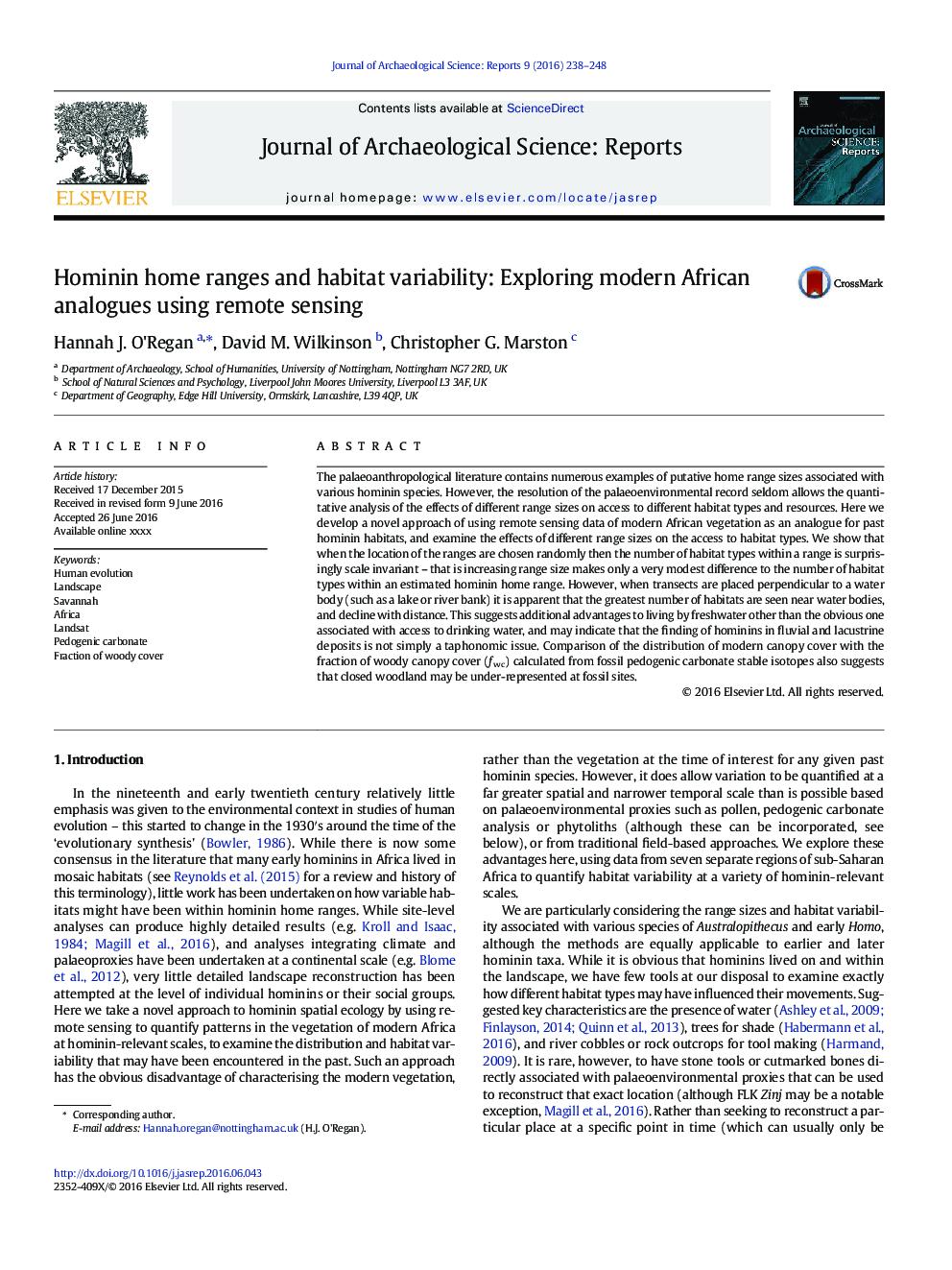| Article ID | Journal | Published Year | Pages | File Type |
|---|---|---|---|---|
| 7445389 | Journal of Archaeological Science: Reports | 2016 | 11 Pages |
Abstract
The palaeoanthropological literature contains numerous examples of putative home range sizes associated with various hominin species. However, the resolution of the palaeoenvironmental record seldom allows the quantitative analysis of the effects of different range sizes on access to different habitat types and resources. Here we develop a novel approach of using remote sensing data of modern African vegetation as an analogue for past hominin habitats, and examine the effects of different range sizes on the access to habitat types. We show that when the location of the ranges are chosen randomly then the number of habitat types within a range is surprisingly scale invariant - that is increasing range size makes only a very modest difference to the number of habitat types within an estimated hominin home range. However, when transects are placed perpendicular to a water body (such as a lake or river bank) it is apparent that the greatest number of habitats are seen near water bodies, and decline with distance. This suggests additional advantages to living by freshwater other than the obvious one associated with access to drinking water, and may indicate that the finding of hominins in fluvial and lacustrine deposits is not simply a taphonomic issue. Comparison of the distribution of modern canopy cover with the fraction of woody canopy cover (Æwc) calculated from fossil pedogenic carbonate stable isotopes also suggests that closed woodland may be under-represented at fossil sites.
Related Topics
Social Sciences and Humanities
Arts and Humanities
History
Authors
Hannah J. O'Regan, David M. Wilkinson, Christopher G. Marston,
